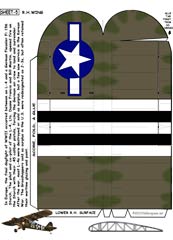


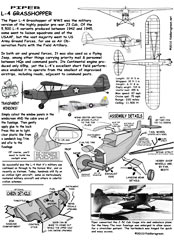
Piper-L4-Grasshopper - $$8.95
The Piper L-4 was basically, the all familiar Piper J3 Cub with more overhead windows allowing the pilot to check for traffic directly over the aircraft with minimal effort. It was used in the European and Pacific theaters doing any job assigned. In a few cases, they were actually credited with destroying enemy fighters. The folder ALSO includes a second model.. the Air Ambulance in two scales.
Piper L-4 Grasshopper Observation Aircraft and AH-1 Air Ambulance
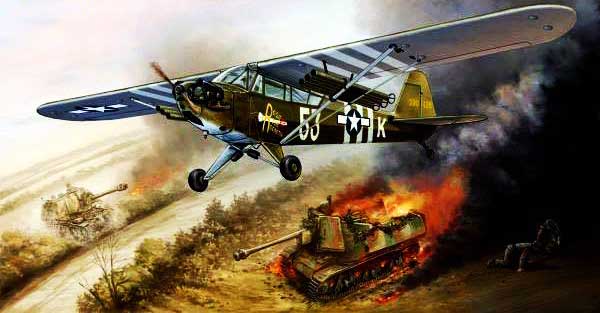
Piper L-4 Grasshopper WWII Observation Aircraft
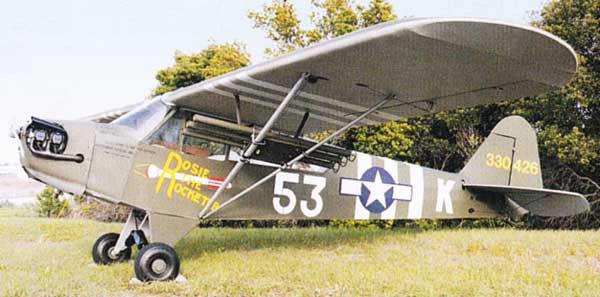 This was basically, the Cub with more overhead windows allowing the pilot to check for traffic directly over the aircraft with minimal effort. It was used extensively in both the European and Pacific theaters doing any job assigned. In a few cases, they were actually credited with destroying enemy fighters! |
|---|
| This Piper L-4 Grasshopper has been completely re-designed (2/10) but the earlier versions are still included in the 'obsolete folder' of the NEW version |
Primarily to serve at elimination training bases in World War II the Navy acquired 230 Piper NE-1s , basically similar to the Army L-4s with Continental 0-170 engines. Twenty NE-2s were similar.
As war spread around the world at the beginning of the 1940s, the U.S. military, dominated by old soldiers who expected to fight the next war exactly as they fought the last one, had to be convinced that the requirements for certain weapons needed to be redefined. An example was the Army's observation airplanes, latter-day versions of the World War I deHavilland DH-4.
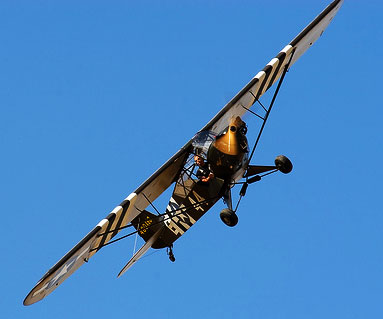 On the eve of America's entry
into World War II, Aeronca, Piper, and Taylorcraft sent loaner
airplanes to the Army to demonstrate maneuvers and prove the versatility
of these little crafts. As a result, the North American 0-47s
and Curtiss 0-52s-with 600 to 900 horsepower- would soon be replaced
by 65-horsepower 0-57 T-Crafts, 0-58 Aeronca's, and 0-59 Pipers
(later designated as L-2s, L-3s, and L-4s, respectively).
On the eve of America's entry
into World War II, Aeronca, Piper, and Taylorcraft sent loaner
airplanes to the Army to demonstrate maneuvers and prove the versatility
of these little crafts. As a result, the North American 0-47s
and Curtiss 0-52s-with 600 to 900 horsepower- would soon be replaced
by 65-horsepower 0-57 T-Crafts, 0-58 Aeronca's, and 0-59 Pipers
(later designated as L-2s, L-3s, and L-4s, respectively).
The many tasks performed by the little liaison airplanes during that and a couple of subsequent wars is another proud story. This leads us to another little-known Piper.
During World War II, other liaison aircraft appeared. The Vultee L-5, with 185 hp, had no civil sister, and the L-1-originally the 0-49-was a big 300-hp Stinson which also had no civil counterpart. The L-6 through L-13 were mostly prototypes, with power ranging from 65 to 600 hp. Which brings us to the L-14 (see right) .
The Army ordered 850 Piper L-14s in 1945, but only five were produced before the war ended, and the remaining 845 were cancelled. These five were originally designated YL-14s, the "Y" (for service test) later dropped. Actually, the L-14, although often described as a modified J-5C, was a new design, and it received a new Approved Type Certificate, apparently in anticipation of entering the civilian market when hostilities ended. It did not. The new, postwar Piper was the PA-12 Super Cruiser.
The L-14 had a large "greenhouse" that extended halfway to the vertical tail, beneath which was provision for two litter patients- one above the other-when the craft was used as an air ambulance. The L-14's most distinctive feature was its main landing gear, with a 75-inch tread and a long shock strut (anchored to the upper longer on) that utilized rubber biscuits in compression. The L-14's new 125-hp 0-290-C engine, with electric starter, was fully cowled. This airplane was the first Piper with flaps, and a 14-gallon fuel tank was mounted in each wing, feeding to a two-gallon header tank in the usual Piper location-in the fuselage ahead of the windshield. Tires were 7.00 x 6. A wind-driven generator on the belly charged the six-volt battery. The L-14 seated two side-by-side in front, and could carry a second passenger in the rear if no litter patients were aboard.
A two place tandem cockpit, dual-control, modified J-3 civilian light plane built by Piper Aircraft Corporation, Lock Haven, PA. Military models were designated the L-4B, L-4H, L-4J. This lightweight aircraft was among the most useful tactical aircraft of WWII. Dubbed "Grasshoppers" for their ability to fly into and out of small spaces, this military adaptation of the famous Piper J-3 Cub became the center of the toughest inter service turf fights of the war. General George S. Patton, Jr. played a major role in their introduction, a fact often overlooked in light of his other major accomplishments.
The L-4 had a fabric-covered frame with wooden spar, metal-rib wings, a metal-tube fuselage, and a metal-tube empennage. Its fixed landing gear used "rubber-band" bungee cord shock absorbers and had hydraulic brakes and no flaps.
The aircrafts flight instruments included an airspeed indicator, and altimeter, compass, and simple turn-and-bank indicator. It was equipped with a two-way radio, powered by a wind-driven generator.
The prototype L-4B flew in late 1941. At least 5,703 aircraft were built for military use with approximately 14,125 being built for civilian service. A few of these L-4B versions were field modified and fitted with bazooka anti-tank rockets. Major Charles Carpenter of the U.S. Fourth Army Division fitted six of these weapons under the wings of his L-4B and destroyed at least 5 German tanks.
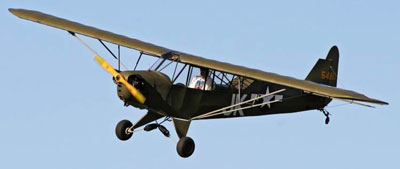 Grasshopper pilots flew dangerous missions over enemy territory without any armor. Other nicknames for these aircraft included "Maytag Messerschmitts" or the "little green planes." |
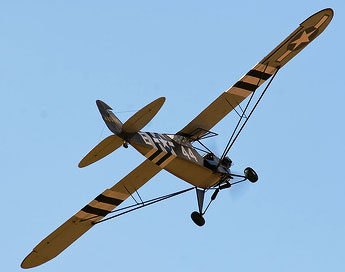 Every part of the airplane is available from someone in new or restored condition, so keeping one flying is easy, but not cheap. The popularity of the L-4 Grasshopper has made it the most expensive of the 65 hp Lbirds. |
The L-4 Grasshopper is the champion when it comes to both the numbers produced and those still surviving. It's impossible to disguise its Piper Cub roots, as the only noticeable alteration the military made was the addition of the glass down the sides and up over the top of the fuselage. Other than that, it's a stock J-3 Cub.
For that reason, it didn't pick up as much weight as the others and so flies noticeably better. Thousands of L4s were built and many were re windowed as J3s after the war. What can be said about a L-3/L-4 that hasn't already been said a thousand times? With 65 hp, it's a great flying airplane although, as you'd expect. with two bodies on board it gives up a tremendous amount of performance.
All of the little L-birds land like feathers, but the L-4 is the easiest and softest to land. Put 10 knots of wind on the nose, and all of them seem to come to a halt before gently touching down.
The L-4 retained the metal ribs of the Cub, so only the spar is made of wood. The ribs, however, are trusses of T-sections formed of thin aluminum riveted and screwed together. If poorly treated, these rib trusses are easily damaged and attract corrosion in the corners.
Model'in Tips
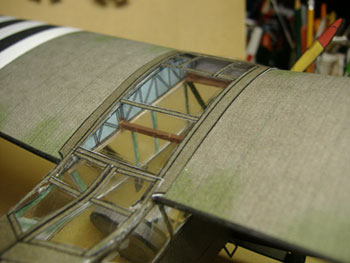 |
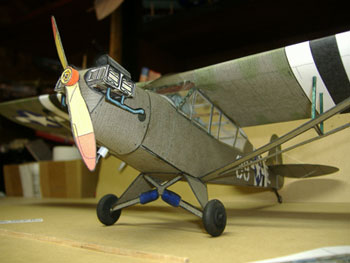 |
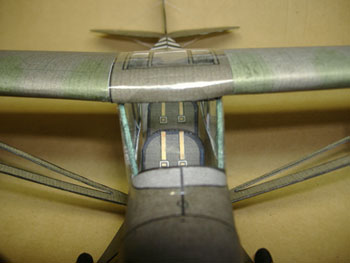 |
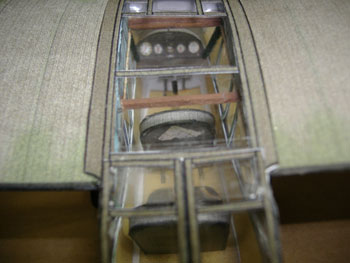 |
If someone were to build it without the clear windows they shouldn't have any problems (best for novice builders). With the clear windows is another story and a lot of additional things have to be done..... One thing I would change to the basic model, regardless of clear windows or not, is attach the very top back window to the rest of the top windows instead of attached to the fuselage. |
|
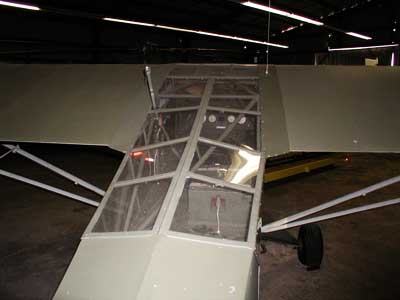 Piper L-4 Grasshopper top view |
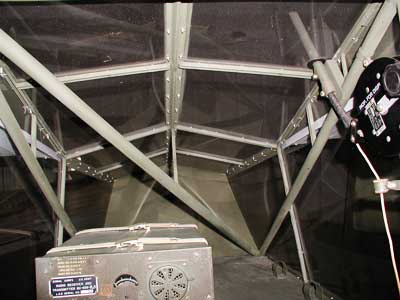 Piper L-4 Grasshopper interior view of the aft area |
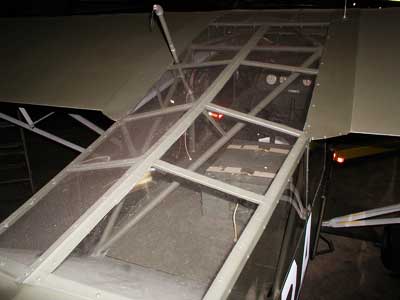 Piper L-4 Grasshopper close up Piper L-4 Grasshopper close up |
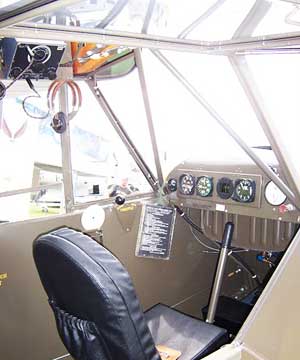 Piper L-4 Grasshopper Cockpit |
Specifications for the Piper L-4 Grasshopper
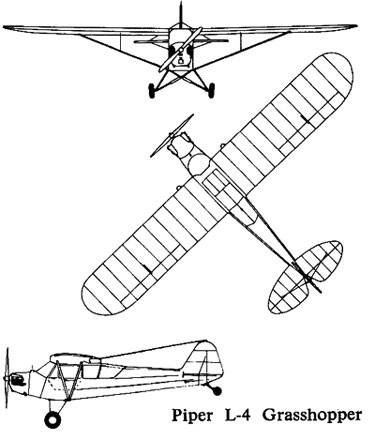 |
Crew: one pilot |
Piper L-4 Grasshopper Details
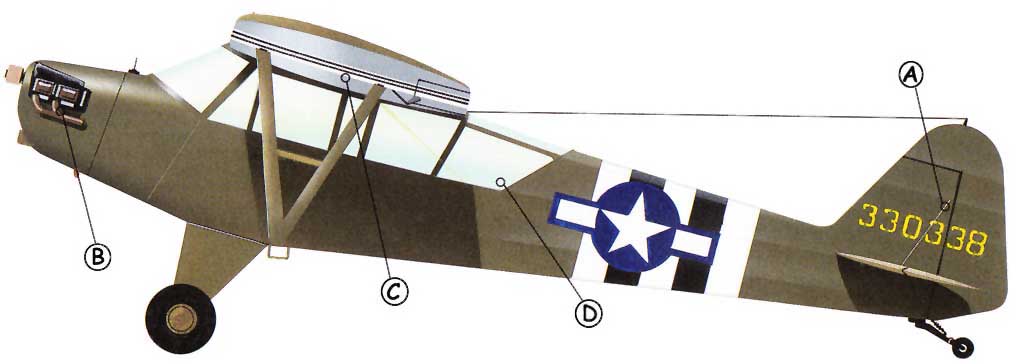 |
|||
| A: Cables or struts braced the Piper L4 tailplanes and wings. These allowed the necessary strength to be built in without resorting to a heavy structure. Rough field operations exert a lot of stress on airframes. | B: Mounted semi-exposed, the Continental flat-four engine powered the majority of more than 5000 Piper L-4s delivered to the Army, Several J-4 Cubs owned by civilians were pressed into service. | C: Structurally. the Piper L-4 was quite simple and had a fabric-covered wooden framework. The wing had no slats or flaps, but was equipped with large, long-span ailerons, Internally the wing was braced with wire. | D: For solo flights the L4 Grasshopper pilot sat in the rear seat, which had a full set of controls but was normally used by the observer. The Grasshopper was also equipped with a map table and the radio fit varied between models. |
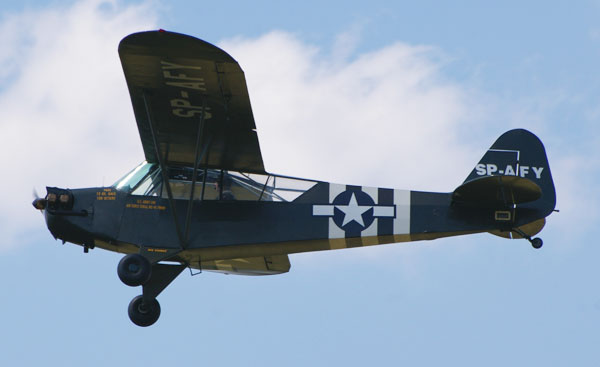 The "L'series liaison aircraft in US army service were often known as "grasshoppers." These aircraft served with artillery and outfits spotting targets and giving commanders real time information on enemy positions. They also served in Liaison Squadrons, such as the 25th Liaison Squadron which earned fame in the Pacific Theater with their "Guinea Short Lines" aircraft. |
The Piper AH-1 Air Ambulance/ Piper J-5 / Piper Cruiser version
When people think of evacuating wounded or injured personnel today, the image of a helicopter hovering or landing in a clearing pops into the mind. However, in 1942 there were no helicopters in the U.S. Navy inventory; it would be another 1-1/2 years before one was acquired and then substantial testing to develop recovery techniques. To provide aerial ambulances, the USN used a number of converted civilian aircraft to carry one or more casualties. One of these aircraft was the Model J-5C Cub Cruiser built by the Piper Aircraft Corporation of Lock Haven, Pennsylvania.
The Piper J-5 Cub Cruiser was a single-engine high-wing monoplane with fixed landing gear that had been developed from the J3 Cub. (In USN service, the J3 Cub was designated NE, q.v.) All three models of the J-5 were powered by an air-cooled engine with four-horizontally opposed cylinders driving a two-bladed wooden propeller. The J-5 used the same wing, tail surfaces and controls as the J3 but the fuselage was widened to accommodate two passengers in the rear seat rather than one that could be accommodated in the J3. Unlike the J3, the J-5 had a metal cowling surrounding the engine and one additional longeron, the structural member running from front to rear in the fuselage; the rest of the aircraft was constructed of spruce, aluminum-alloy and welded steel-tube framework all covered with fabric.
The first model, introduced in January 1940, was the J-5A equipped with a 75 hp Continental A-75-8 engine; later J-5As had an 80 hp Continental A-80 engine. The second model, also introduced in 1940, was the J-5B equipped with a 75 hp Lycoming engine. The last model, introduced in early 1942 before civilian production was terminated, was the J-5C powered by a 100 hp Lycoming O-235 engine. The J-5C had a one-piece windshield in the last few units, aluminum spars in place of spruce spars and a rubber shock mounted landing gear. A total of over 1,405 Model J-5s, including 35 J-5Cs, were produced.
One hundred modified J-5Cs were ordered by the USN as HE-1 ambulance aircraft in 1942. These aircraft could accommodate a pilot and one stretcher. The deck of the fuselage from the trailing-edge of the wing to the vertical fin was arranged to hinge up to permit the loading and unloading of one USN standard litter. The hinge was located forward at the rear of the wing.
The USN took delivery of their first helicopter in late 1943 and a decision was made to reassign the Type/Class Designation H, indicating Hospital aircraft, to helicopters and establish a new Type/Class Designation of A for Ambulance aircraft. As a result, all HE-1s were redesignated AE-1s in 1943.
OPERATIONAL HISTORY
In USN service, the HE-1/AE-1 aircraft were usually based at small, remote air stations, e.g., Naval Auxiliary Air Stations (NAASs) Brown Field and Holtsville, California; Chase Field, Texas; Martha's Vineyard, Massachusetts; Oceana, Virginia; Vero Beach, Florida, etc. that were located some distance from major medical facilities.
The U.S. Marine Corps (USMC) accepted their first in 1943. By August of that year, the Marines were operating seven aircraft assigned to the Base Air Detachments (BADs) at Marine Corps Air Stations. With the introduction of helicopters, these aircraft became superfluous and all were discarded soon after the war ended.
 |
Navy engineers dropped the Piper L-4 Grasshopper ditched by Wilfred M. Boucher of the 41st Field Artillery at Cavalaire on Yellow Beach. An air bubble in the L-4's fuel line caused a stall and the crash. |
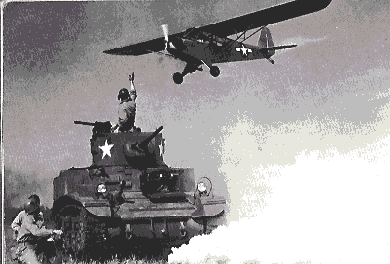
 5/5/10...This Piper AH-1 Air Ambulance version has been added to the kit in 2 scales and comes with the little Stokes Stretcher shown above.. |
Shared Links: |
|||


